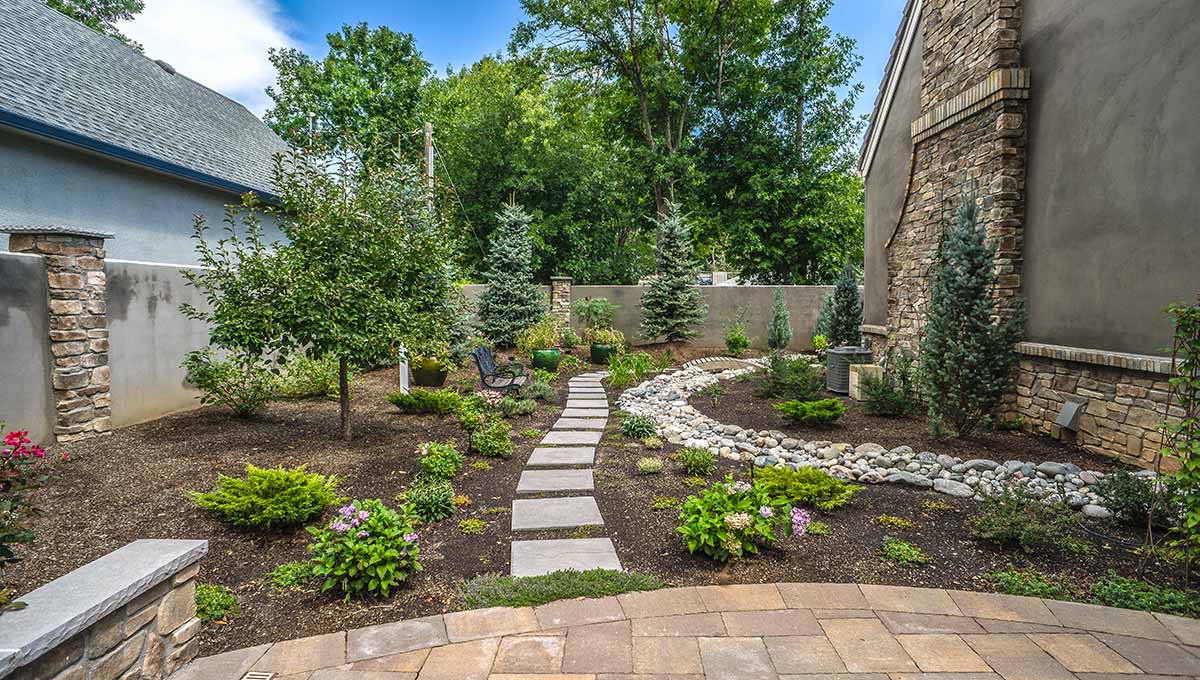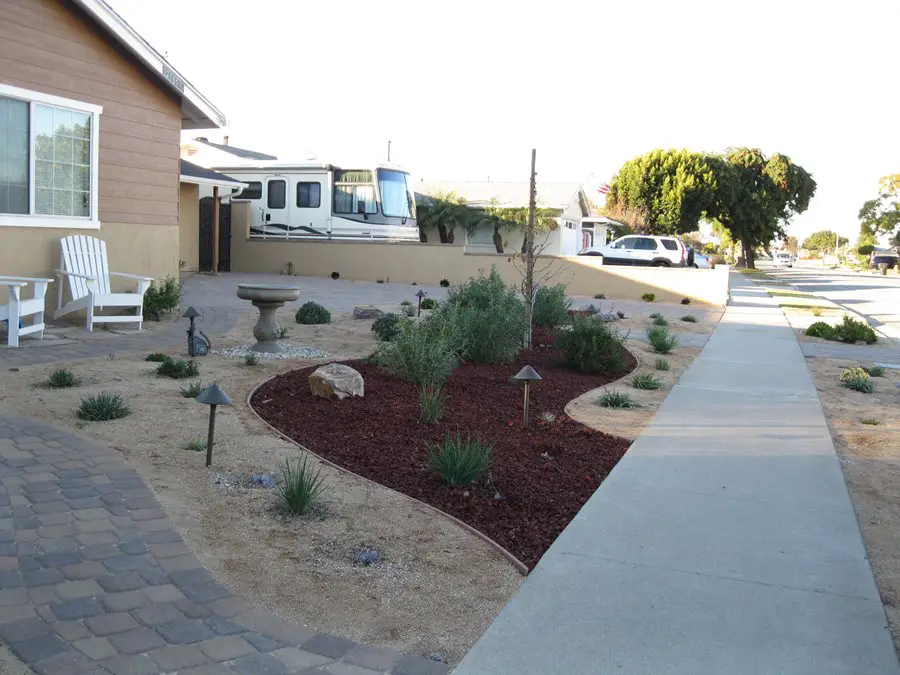1. Research your climate and soil type to learn what kind of plants are best suited for your area.
2. Design your yard with water conservation in mind. Use native plants that require little to no irrigation, and plan for rainwater catchment and storage.
3. Group plants together based on their water needs, so that you can more easily manage irrigation.
4. Use mulch to help reduce evaporation and keep soils cooler in hot weather.
5. Consider using drought-tolerant grasses or groundcovers instead of a traditional lawn.
- Assess your yard: Evaluate the sun, wind and shade patterns; note problem areas; and think about how you want to use your xeriscape
- Create a plan: Once you have a good understanding of your yard, sketch out a design on paper or using landscape design software
- Include existing features that you want to keep, as well as new features you’d like to add
- Select plants: Choose low-water, drought-tolerant plants that are appropriate for your climate zone and will thrive in the conditions of your yard
- Consider the size, shape and color of each plant to create an attractive and balanced design
- Install irrigation: A key part of any xeriscape is an efficient irrigation system that delivers water directly to the roots of plants with minimal evaporation or runoff
- Drip irrigation is ideal for this purpose
- Amend the soil: Improve drainage and water retention in sandy or clay soils by adding organic matter such as compost or peat moss
- This will help reduce watering frequency while still keeping plants healthy and vigorous

Credit: www.accentlandscapesinc.com
What are the 7 Principles of Xeriscaping?
The 7 principles of xeriscaping are:
1. Planning and design: This involves creating a plan for your xeriscape garden, taking into account the lay of the land, the climate, and the types of plants you want to use.
2. Soil improvement: This means amending your soil to make it more suitable for xeriscaping.
This may involve adding organic matter or nutrients, or changing the pH level.
3. Efficient irrigation: This is vital in a xeriscape garden, as you need to make sure your plants are getting enough water without wasting any. Drip irrigation is often used in xeriscapes.
4. Use of mulch: Mulch helps to retain moisture in the soil and keep roots cool, so it’s an important part of xeriscaping. organic materials such as wood chips or straw are often used as mulch in xeriscapes.
How Do You Plan a Xeriscape?
When it comes to landscaping, xeriscape is a term you might have heard before. But what exactly is it? Xeriscape is a type of landscaping that conserves water through the use of drought-tolerant plants.
This type of landscaping can be beneficial for both your wallet and the environment. Here are some tips on how to plan a xeriscape:
1. Choose the right plants: When selecting plants for your xeriscape, it’s important to choose ones that are native to your area and require little water to thrive.
You can ask your local nursery or gardening center for help in choosing the right plants for your landscape.
2. Group plants together: Another way to conserve water is by grouping plants together based on their watering needs. This way, you can make sure each plant gets the amount of water it needs without wasting any extra.
3. Use mulch: Mulch helps retain moisture in the soil and prevents evaporation, which means less watering for you! Apply a layer of mulch around your plants (but not touching their stems or leaves) to help keep them healthy and hydrated.
4. Create different levels: Add interest and dimension to your landscape by creating different levels with different types of plants.
Not only will this make your yard more visually appealing, but it will also help you save water since taller plants will shade shorter ones and reduce evaporation from the soil surface.
How Do I Prepare My Yard for Xeriscaping?
If you’re looking to xeriscape your yard, there are a few things you’ll need to do in order to prepare. First, you’ll need to assess your yard and see what areas get the most sun and which parts are shaded. You’ll also need to take into account the amount of rainfall your area gets each year.
Once you have a good understanding of your yard, you can begin planning out where you’d like to put certain plants. When selecting plants for xeriscaping, it’s important to choose those that are native to your area or that are known to be drought-tolerant. You’ll also want to make sure you have a variety of different plant types so that your yard has some visual interest.
Once you’ve selected the perfect plants, it’s time to start planting! Be sure to dig holes that are twice as wide as the root ball of each plant and add some compost or other organic matter into the hole before planting. Water each plant well after planting and then continue to water them regularly until they’re established.
With a little bit of planning and effort, you can turn your yard into a beautiful and low-maintenance xeriscape!
Is Xeriscaping Cheaper Than Grass?
When it comes to your landscaping, there are many different factors that can affect the cost. The type of plants you choose, the size of your yard, and even the climate can all play a role in determining how much it will cost to maintain your lawn. One common question people ask is whether xeriscaping is cheaper than grass.
The answer to this question depends on a few different factors. First, let’s take a look at what xeriscaping is. Xeriscaping is a type of landscaping that uses native plants that require little to no water or maintenance.
This means that once you have installed a xeriscape, you won’t have to worry about watering it regularly or mowing the lawn.
So, does this mean that xeriscaping is always cheaper than grass? Not necessarily.
The upfront costs of installing a xeriscape may be higher than installing a traditional lawn, depending on the types of plants you choose and the size of your yard. However, over time, xeriscapes typically cost less to maintain since they don’t require as much water and upkeep.
In addition, if you live in an area with severe drought conditions or water restrictions, xeriscaping can be an excellent way to save money on your water bill.
Even if you don’t live in an area with extreme weather conditions, using native plants that don’t require as much water can still help reduce your overall landscaping costs.
NO GRASS Front Yard Ideas | Xeriscape Landscape Design Tips from a Landscape Designer!
Xeriscape San Antonio
Looking to save water and money on your landscaping bills? Xeriscape may be the answer. Xeriscaping is a type of landscaping that uses native, drought-resistant plants.
This means less watering and maintenance for you!
If you live in San Antonio, there are many xeriscape options available to you. The climate in San Antonio is perfect for xeriscaping – hot and dry summers followed by cooler, wet winters.
Some drought-resistant plants that will do well in San Antonio include:
• Agave
Xeriscape Austin
Looking to save some water this summer? Xeriscaping is a great way to do just that! Here in Austin, we are no strangers to drought conditions.
In fact, we’ve been dealing with drought off and on for the past few years. That’s why more and more people are turning to xeriscaping as a way to conserve water.
So, what exactly is xeriscaping?
Xeriscaping is a type of landscaping that uses native plants that require little to no irrigation. This means that once your xeriscape is established, it will be much easier on your water bill!
There are many benefits to xeriscaping, beyond just saving water.
Native plants are adapted to our climate and soil, so they require less upkeep than non-native plants. They also provide habitat for local wildlife and can attract beneficial insects like pollinators. Xeriscapes can even help reduce pollution and runoff from rainfall!
If you’re interested in starting your own xeriscape, there are plenty of resources available online and at your local nursery or garden center. The most important thing is to choose plants that will work well in your particular space and sunlight conditions. With a little planning, you can create a beautiful, low-maintenance landscape that will save you money and help the environment!
Xeriscape Texas Plants
Looking for the best Xeriscape plants for your Texas landscape? Here are 10 of our favorites, all of which are low-maintenance and drought-tolerant.
1. Mexican Feather Grass (Nassella tenuissima) – This native grass has a nice, fine texture and produces beautiful feathery flowers in the spring.
It’s a great choice for mass plantings or as an accent in rock gardens.
2. Purple coneflower (Echinacea purpurea) – A favorite of butterflies, this North American native wildflower is easy to grow and blooms from summer into fall. It’s also tolerant of poor soil conditions.
3. Red yucca (Hesperaloe parviflora) – Another butterfly magnet, red yucca features long-blooming, bright red flowers that appear on tall stalks above its rosette of strap-like leaves. It’s heat-, cold-, and drought-tolerant and does well in full sun or partial shade.
4. Bluebonnets (Lupinus texensis) – The official state flower of Texas, bluebonnets are must-have annuals for any Lone Star State garden!
They bloom in early spring and prefer full sun and well-drained soils.
Conclusion
If you live in an arid climate, xeriscaping is a great way to conserve water and create a beautiful yard. By choosing the right plants and using efficient irrigation techniques, you can have a lush, green xeriscape that will save you money on your water bill and help the environment.


